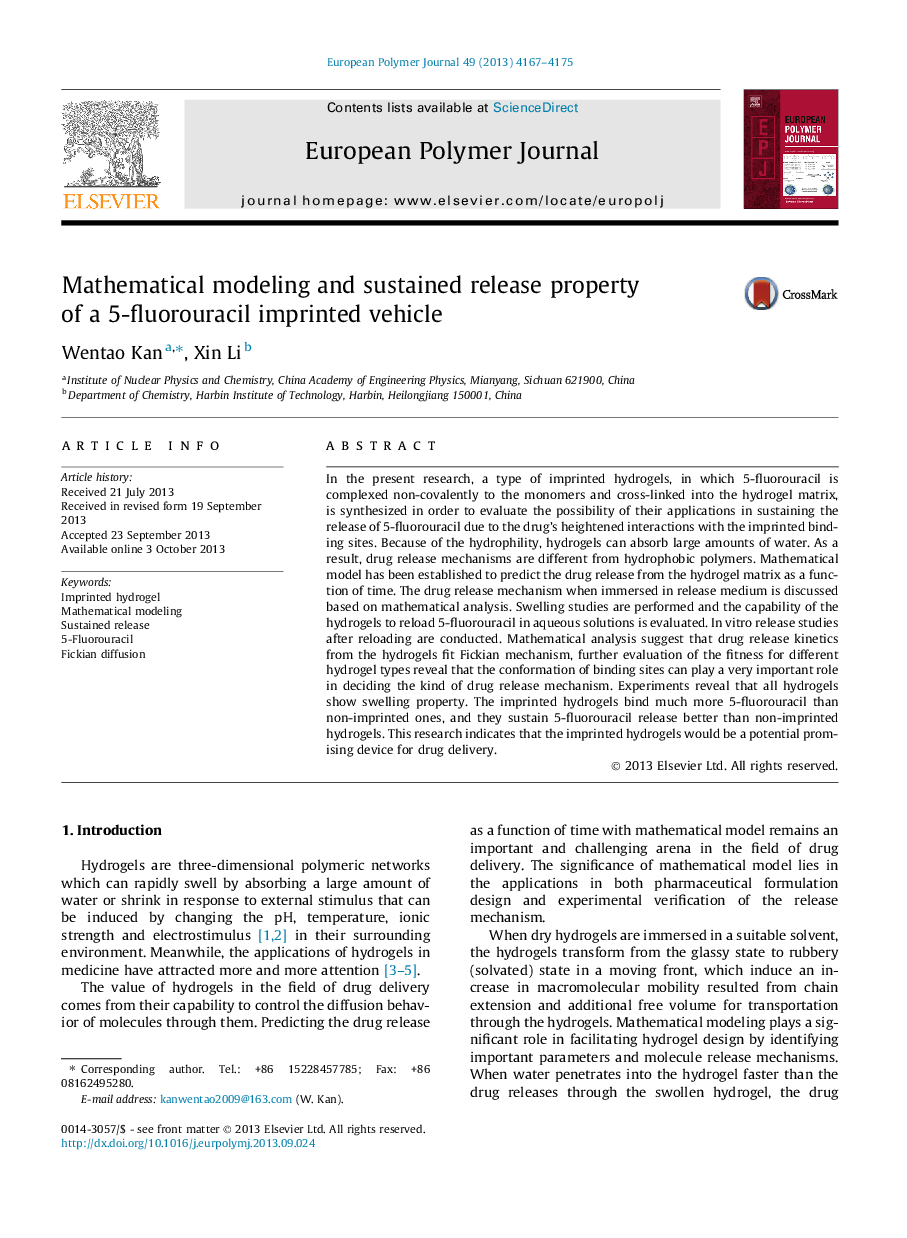| Article ID | Journal | Published Year | Pages | File Type |
|---|---|---|---|---|
| 1401961 | European Polymer Journal | 2013 | 9 Pages |
•Analysis based on mathematical model indicated Fickian drug release mechanism.•Drug release profiles were modeled to evaluate the fitness to Fickian kinetics.•Conformation of functionality can decide the polymer’s drug release mechanism.•Imprinted hydrogels(8:1) showed better loading and sustained release properties.•Conformation of functionality can decide loading and sustained release properties.
In the present research, a type of imprinted hydrogels, in which 5-fluorouracil is complexed non-covalently to the monomers and cross-linked into the hydrogel matrix, is synthesized in order to evaluate the possibility of their applications in sustaining the release of 5-fluorouracil due to the drug’s heightened interactions with the imprinted binding sites. Because of the hydrophility, hydrogels can absorb large amounts of water. As a result, drug release mechanisms are different from hydrophobic polymers. Mathematical model has been established to predict the drug release from the hydrogel matrix as a function of time. The drug release mechanism when immersed in release medium is discussed based on mathematical analysis. Swelling studies are performed and the capability of the hydrogels to reload 5-fluorouracil in aqueous solutions is evaluated. In vitro release studies after reloading are conducted. Mathematical analysis suggest that drug release kinetics from the hydrogels fit Fickian mechanism, further evaluation of the fitness for different hydrogel types reveal that the conformation of binding sites can play a very important role in deciding the kind of drug release mechanism. Experiments reveal that all hydrogels show swelling property. The imprinted hydrogels bind much more 5-fluorouracil than non-imprinted ones, and they sustain 5-fluorouracil release better than non-imprinted hydrogels. This research indicates that the imprinted hydrogels would be a potential promising device for drug delivery.
Graphical abstractFigure optionsDownload full-size imageDownload as PowerPoint slide
